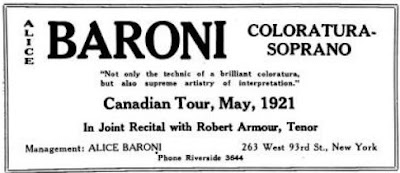The Boehm house is the middle of the three.
Brothers William W. and Thomas M. Hall were prolific developers at the turn of the last century. At a time when millionaires were moving into lavish Fifth Avenue palaces along Central Park, the brothers erected speculative residences that held their own among the custom-designed mansions. In 1897 they tested the opposite side of the park, hiring architect Alexander M. Welch (with whom they worked repeatedly) to design three upscale townhouses on West 93rd Street between Broadway and West End Avenue.
Completed early in 1898, the homes were advertised as "the most attractive, medium sized, moderate priced Private Houses ever offered. Accessible restricted location." (The reference to "restricted location" meant that no businesses were allowed in the neighborhood.)
While the ad hinted that the three homes were not as sumptuous as some of the palazzos the Hall Brothers erected on the East Side, 261 through 265 West 93rd Street were undeniably first-class. Welch designed them as American basement houses, foregoing the high stoops which were falling from fashion. Each identical house had a rusticated limestone first floor designed in the Beaux Arts style. The ornate keystones above the arched openings did double-duty as brackets for the slightly projecting bays at the second and third floors. A center bracket took the form of an elaborately carved cartouche surrounded by leaves and vines. French gave way to Italian on the upper floors as Welch turned to Renaissance Revival. The prim limestone bays sat against a wall of gray Roman brick. The fourth floor openings were separated by Doric pilasters, above which the cornices were decorated with swags.
On November 12, 1898, the Record & Guide reported that William T. Hall had sold the center house to Augusta Boehm, the wife of Alexander Boehm. (The title to real estate was commonly placed in the wife's name within well-to-do couples.)
Alexander Boehm was a partner in the women's garment manufacturing firm of Boehm & Levine. He and Augusta had two children, Herbert Leo and Meta Gertrude. Herbert, who was 19 years old when the family moved in, enrolled as a sub-freshman in the Free Academy of the City of New York in 1901.
On March 10, 1903, the New York Herald reported that "in the presence of relatives only," Meta Gertrude "was married to Mr. Maurice Sichel yesterday afternoon, at Delmonico's. The ceremony was followed by a reception, dinner and dance." The article noted, "Mr. and Mrs. Sichel sail for Europe to-day."
Seven years later, on March 9, 1910. Herbert was married to Josephine M. Clute. Now empty nesters, the Boehms leased 263 West 93rd Street to Richard Melancthon Hurd in 1911.
Hurd married Lucy Gazzam on September 22, 1898, and the couple had four children. The president of the Lawyers Mortgage Co., Hurd was an expert in real estate economy and the author of the 1903 Principles of City Land Values. The Hurds' collection of Italian primitives included artists like Fra Filippo Lippi, Domenico Ghirlandaio, and Antonio Veneziano.
If the Richard Hurd family moved into 263 West 93rd Street at all, their stay was short. More likely, Richard signed the lease for a relative, Ebenezer Hurd, who was undergoing financial hardships at the time, and who was listed at the address in 1912. On May 10 that year, The New York Times reported that Halstead & Co., of which Ebenezer Hurd and James W. Halstead were partners, had declared bankruptcy. The article noted, "The petition says that Hurd, who lives at 263 West Ninety-third Street, New York, refused to join in the petition, but that he and Halstead and the company are all insolvent." Hurd managed to survive the bankruptcy, and the following year was operating on his own as a member of the New York Produce Exchange.
Hurd appears to have remained in the 93rd Street house until around 1915. Marion L. Wilder was leasing it in 1917. She was a 1908 graduate of Mount Holyoke College. Marion would have to find other accommodations when the house was sold in March 1921 to Henri M. Barron and his wife Alice Kraft Baroni.
Barron was an operatic tenor, and his wife was a coloratura soprano. Henri Barron was known to opera audiences, but it was Madame Alice Kraft Baroni who stole the limelight. On February 28, 1925, Equal Rights magazine wrote, "Prima donna of opera, concert and song recital and actively engaged in her career, she has also found time in the past year to assume editorship of the Musical World, a review that has met with much encouragement and success owing to her extensive acquaintance with musical conditions in Europe and our own country."
Alice's American roots were deep. Her first ancestor arrived in 1638, and Equal Rights noted, "On her maternal side she is descended from Captain James Lawrence of 'Don't give up the ship' fame, and the Moreheads. Two brothers and a son of this family were among our early Governors." She had begun her career at the age of 14, and had performed in the leading opera houses of Europe. In addition to her concert work and editing, Alice Baroni made time for women's causes. She was a founder of the National Woman's Party.
No. 263 West 93rd Street survived as a private home until 1967, when it was converted to two apartments per floor. That configuration lasted until 2010 when it was returned to a single family residence. Much of Alexander M. Welch's interior detail from 1898 survives.
photographs by the author
no permission to reuse the content of this blog has been granted to LaptrinhX.com




.png)

No comments:
Post a Comment